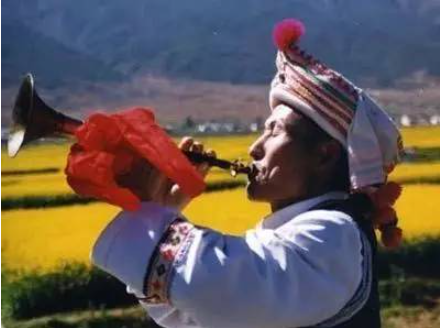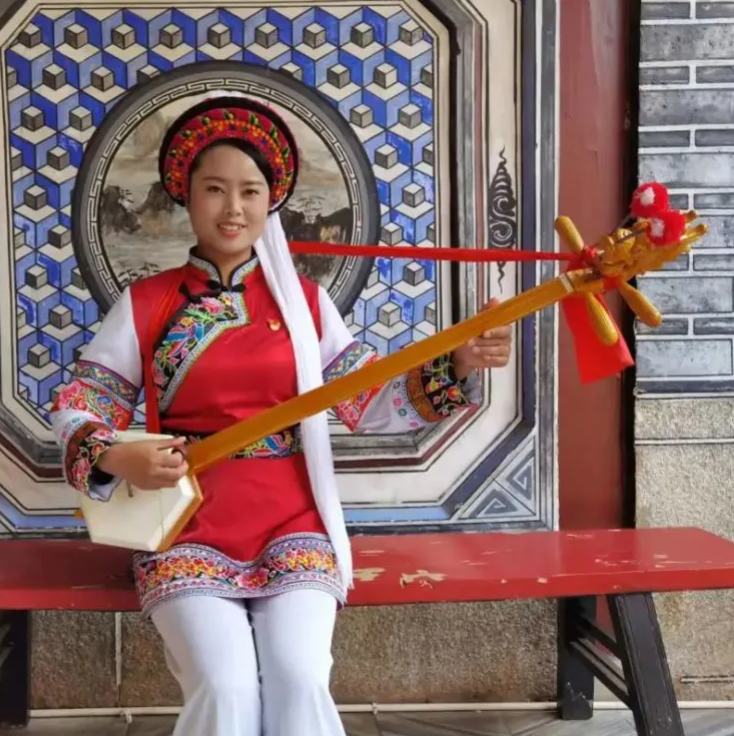Introduction to Bai nationality musical instruments
Bai folk instrumental music mainly includes sanxian music, suona wind and percussion music, cave scripture music, etc. In addition, there are also ancient music and tunes played by bamboo flute, mouth reed, wood leaf, etc. Among them, the most unique musical instrument structure and playing style are suona and suona. Three strings.

The Bai suona is different from the Han suona in structure. There are no sound holes on the back and only seven holes on the front. The reeds are short and stiff, and the bass is strong and steady, and it can also leap into the higher register. The sound range is wide, and the structure of the music is more than the fourth interval jumping into the interval, with a unique style of bright, rough and strong. Bai suona wind and percussion music is not only used in weddings, funerals, festivals, temple fairs and other activities, but also the main accompaniment instrument of traditional Bai opera "Blowing and Blowing Tunes", and sometimes accompaniment of folk songs, and even used for production and labor. During the "Yanghui", the entire planting activity was carried out with suona accompaniment. There are popular folk songs that express various moods such as festivity, sacrifice, joy and sadness, such as "planting seedlings", "big team", "dragon heaven", "Xianjia music", "bees crossing the river", " "Dumb Crying Mother", "Falling Down Spring", etc., have been popular so far as many as hundreds of songs.

The sanxian is also another musical instrument that most affects the hearts of the Bai people. The Bai Sanxian has three types: large, medium and small. The basic structure is similar to that of the Han Sanxian, but the sound quality and playing method have their own unique style. Dasanxian has a rich sound quality and is mainly used for the accompaniment of the Bai folk art "Dabenqu". The alto sanxian, also known as the dragon head sanxian, is the main accompaniment instrument for Bai folk songs. The dragon head sanxian adopts the "two-finger playing method", mainly using the index finger and middle finger to press the strings. In addition, there is a small three-stringed string, which is less than two feet in length. When playing, the fingering is often used. It is good at playing the reverberation and bouncing of each note. Etc. represents the track.
Nanzhao unified the vast territory and brought together many ethnic groups, which cultivated a fertile soil for the development of music and dance of various ethnic groups, which is "customary and good at drinking, singing and dancing". At the same time, the official set up the title of "ci Shuang", which promoted the establishment of the ritual and music system. During this period, there were concerts and honor guards in the palace, and the dance style of "pushing the cup to persuade the jubilee" was extremely popular during official banquets. In addition, the ruling class actively advocated the exchange of ethnic cultures. The Qiuci music, the Pyu national music in Southeast Asia, the Micheng national music, and the Gailuo, Zanpuzi, Bodhisattva, etc., have become popular music and dances in the folk and Gongqian for a while, creating a new style for the promotion and development of folk music and dance in Tanbu. Therefore, the Nanzhao Fengsheng Music, which is the culmination of music, appeared. In the 16th year of Tang Zhenyuan (June 800 AD), he performed in Chang'an, shaking the entire capital of the Tang Dynasty and going down in history. It became the most regulated event in the performance of ethnic minorities in Beijing.
 渝公网安备 50010702504639号
渝公网安备 50010702504639号